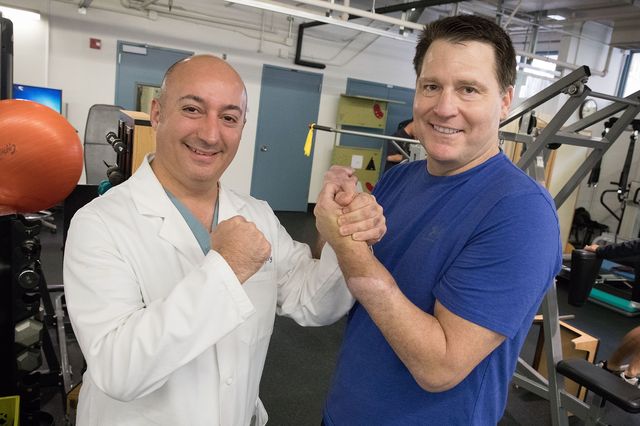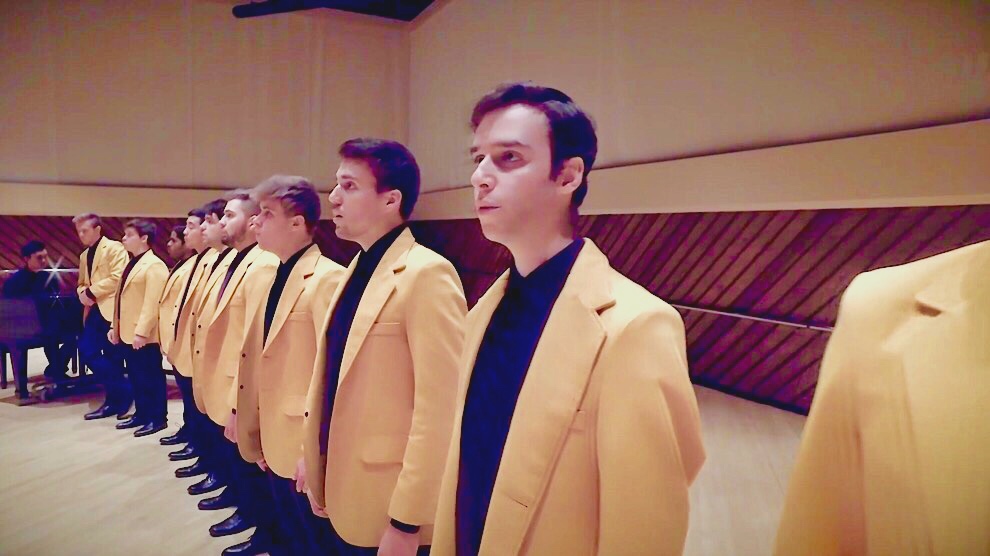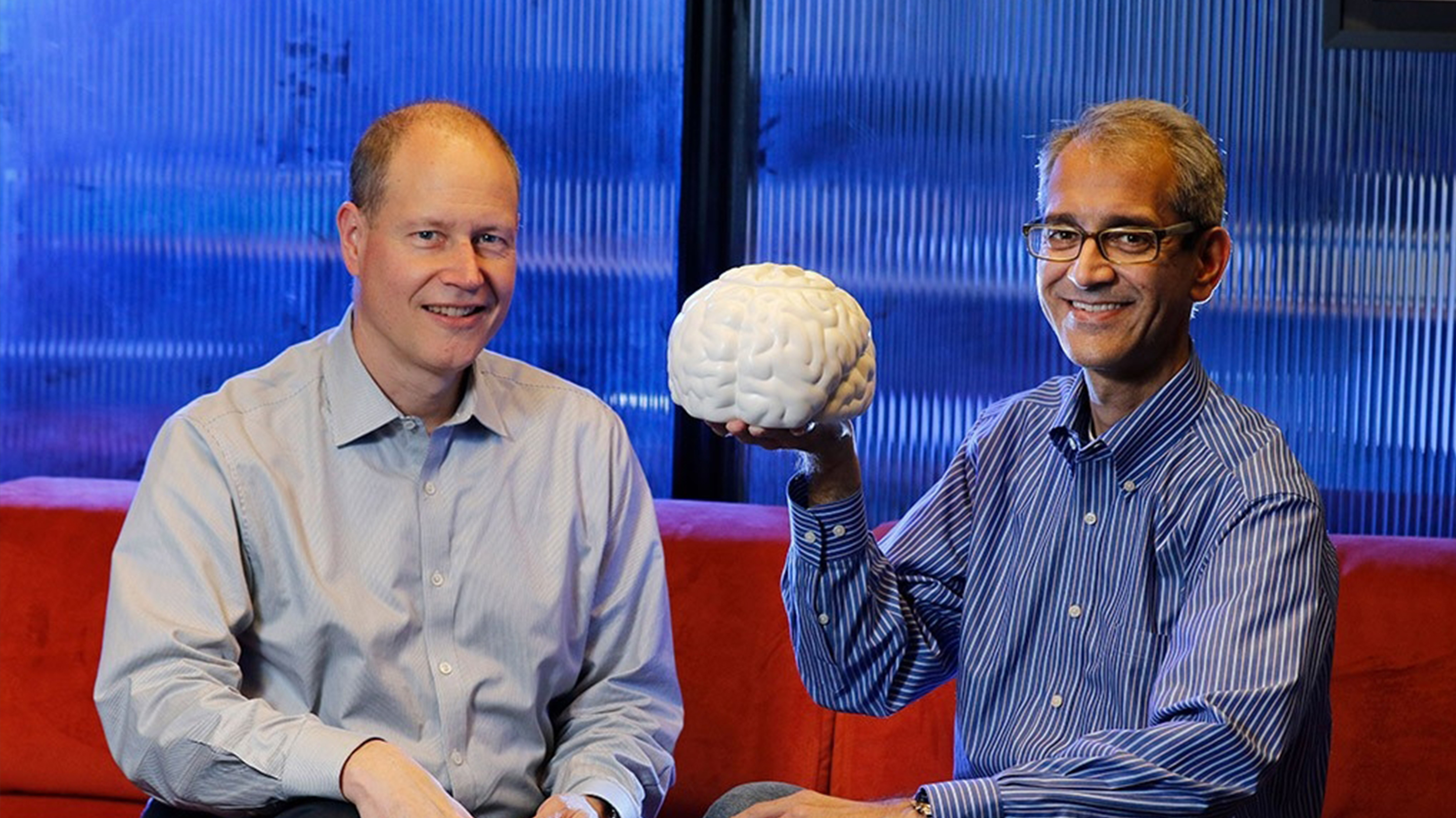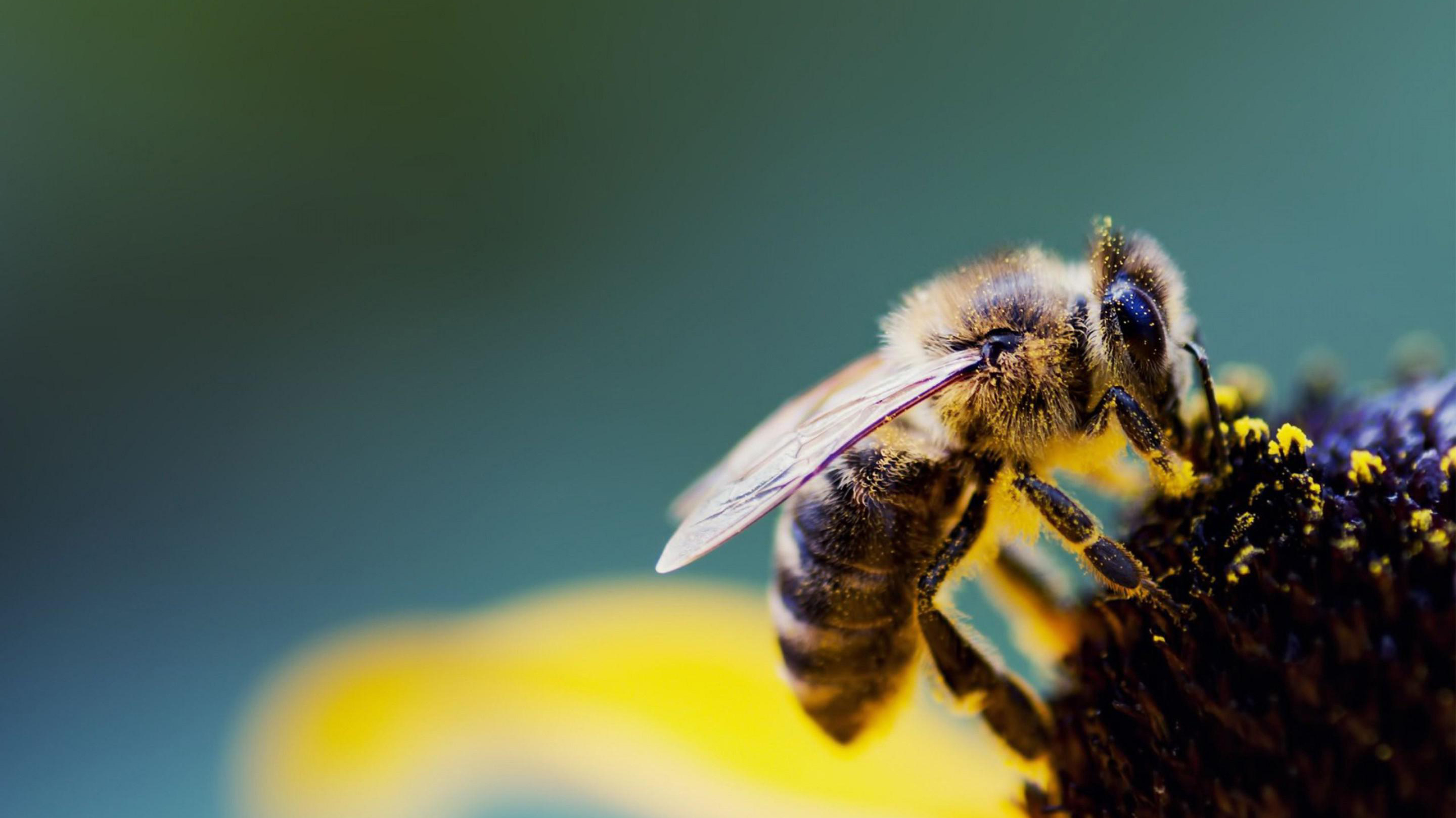Stephen Finally Agrees With Donald Trump On Something



El presidente estadunidense Donald Trump pidió al exdirector de la Oficina Federal de Investigaciones (FBI) James Comey cerrar la investigación sobre los vínculos con Rusia del exconsejero de seguridad nacional de la Casa Blanca, Michael Flynn, según el diario The New York Times.
De acuerdo con una nota publicada este martes en su sitio de internet, el diario destacó que existe un memorando, escrito por el entonces director del FBI poco después de una reunión con Trump, quien le habría dicho: “espero que pueda dejar pasar esto”.
“La solicitud de parte de Trump es la evidencia más clara de que el presidente ha tratado de influir directamente en el Departamento de Justicia y en el FBI respecto de la investigación sobre los vínculos de aliados del presidente con el gobierno de Rusia”, señaló el diario.
“Espero que puedas ver el modo de dejar pasar esto, dejar ir a Flynn. Él es un buen hombre. Espero que puedas dejar pasar esto”, indicó Trump, de acuerdo con el memorando de Comey, que un agente del FBI leyó a un reportero del Times.
El memorando forma parte de un documento que Comey escribió para dejar un registro de lo que él percibía como los esfuerzos indebidos del presidente para influir en una investigación en proceso, de acuerdo con el diario, sobre posibles nexos entre la campaña de Trump y emisarios de Rusia.
Las notas elaboradas por un agente del FBI son valoradas en las cortes como una evidencia creíble de conversaciones, destacó la nota.
Trump dijo a Comey que Flynn no había hecho nada malo, según el memorando, a lo que el entonces director del FBI respondió: “estoy de acuerdo en que es un buen tipo”.
En un comunicado, la Casa Blanca negó que el presidente pidiera a Comey o a otra persona que pusiera fin a alguna investigación, incluida cualquiera que involucrara a Flynn.
“El presidente tiene el máximo respeto por las agencias que aplican la ley, y por todas las investigaciones. Esta no es una representación verídica o exacta de la conversación entre el presidente y el señor Comey”, insistió la Casa Blanca.
Comey fue despedido la semana pasada por Trump, en una decisión que ha sido ampliamente cuestionada. Funcionarios de la Casa Blanca han ofrecido varias explicaciones sobre la salida del director del FBI.
En una entrevista por televisión, sin embargo, Trump aseguró que una de las razones del despido de Comey fue que creía que “este asunto de Rusia” era una “historia inventada”.
La reunión a la que el memorando de Comey se refiere sucedió el 14 de febrero pasado, un día después de que Flynn fuera obligado a abandonar su puesto en la Casa Blanca.
Flynn fue obligado a renunciar luego de que se revelara que había mentido al vicepresidente Mike Pence sobre la naturaleza de las conversaciones telefónicas que había sostenido con el embajador ruso en Estados Unidos.

"Wait, so, did I get him?" #SNLLiveCoastToCoast pic.twitter.com/iePaQf2fbD
— Saturday Night Live – SNL (@nbcsnl) May 14, 2017

A runner who saw off furious race officials to become the first woman to complete the Boston Marathon has repeated the feat 50 years later.
Kathrine Switzer became a hero of the women’s rights movement in 1967 after she officially completed the then all-male race. Having registered under the name KV Switzer, her gender went unnoticed by officials at the start line, but a few miles in she was attacked by an angry official who tried to pull her off the course – creating an enduring image of women’s right’s history.
With the help of a bodyblock from her boyfriend, Switzer evaded the official and finished the race in four hours 20 minutes.
On Monday, aged 70, she ran it again, finishing just under 25 minutes slower in 4:44:31.
In a sign of how times have changed, Switzer was cheered by crowds, and fired the starting gun for the women elite runners’ race.
Switzer told CNN that running in the two races 50 years apart was “like night and day”. On having heard her name called out by supporters, she said: “I’ve got to tell you it was one of the most gratifying emotional experiences I’ve ever had […] it was a wonderful moment.”
She wore her original number – 261 – which was retired by race organisers after she crossed the finish line as a mark of honour. The Boston Marathon has retired only one other number in its history: 61, in recognition of the 61 races started by athlete Johnny Kelly.
More information at: The Guardian

in October 2016, Jonathan Koch, a 51-year-old entertainment executive from Los Angeles, underwent a 17-hour procedure to replace the hand he lost to a mysterious, life-threatening illness. Six months after surgery by the UCLA hand transplant team and countless hours of physical therapy, Koch continues to make remarkable strides in his recovery.
Already, he has used his new hand to hold a jump rope, dribble a basketball, unscrew a bottle top and swing a tennis racquet.
See more at: UCLA

McGill, the Jewish General Hospital and the global AIDS community lost one of their leading advocates and researchers on Tuesday, when Dr. Mark A. Wainberg drowned while on vacation in Florida. Wainberg’s research and collaborations on AIDS and HIV, including the initial identification of the 3TC antiretroviral drug, have saved millions of lives around the world.
Wainberg was the head of AIDS research at the Lady Davis Institute for Medical Research at the Jewish General Hospital, Director of the McGill University AIDS Centre, and Professor of Medicine and of Microbiology and Immunology.
In 2015, he was appointed to the Canadian Medical Hall of Fame in recognition of having “revolutionized our understanding of HIV/AIDS at medical, epidemiological and political levels.”
He was internationally recognized as a leading scientist in the field of HIV/AIDS, and a tireless advocate for the need to improve access to anti-HIV drugs in developing countries. He was well-known for his initial identification of 3TC as an anti-viral drug, in collaboration with BioChem Pharma Inc, in 1989. He made multiple contributions to the field of HIV drug resistance including the identification of many of the mutations in the HIV genome that are responsible for drug resistance.
Dr. David Eidelman, Dean of the Faculty of Medicine and Vice-Principal (Health Affairs), called Wainberg “an international champion in the fight against HIV/AIDS.”


THE MORNING OF MAY 4, 2011, Jameelah El-Shabazz watched out the window of her Bronx apartment as a team of police officers fanned across the rooftop of Banana Kelly High School. The 43-year-old mother of five said she didn’t think much of the scene — drug raids were common in her neighborhood.
As she did most mornings, El-Shabazz said she went to her bedroom to feed her newborn son and to worship before a shrine of candles and carvings arranged atop her wardrobe. Her most treasured object was a wooden tray her father had brought her from Nigeria. A deity of the Ifa religion, which she practices as a high priestess, was carved on its surface and covered in a residue of finely crushed eggshells. El-Shabazz used the substance, known in her faith as efun powder, to cleanse the shrine. She took fresh clumps of the powder from a cup and began to break it up in her hands.
That’s when the narcotics officers kicked in the door.
Her baby shrieked as the gun-wielding officers tore apart rooms looking for PCP, which an anonymous informant had claimed was being sold from the apartment. They ordered everyone to lie on the ground, then turned to her eldest son, Akin Shakoor, who along with another son was having frequent run-ins with police. El-Shabazz said the officers told Shakoor if he didn’t give up the drugs, “they would take all of my children away from me and make sure that I was put out of my apartment.”
See more at: Propublica.org

Using demographic information and survey data, researchers found that political polarization is not rising fastest among those Americans who rely most on internet and social media for news.
A study by a Brown University economist has found that recent growth in political polarization is largest for demographic groups in which individuals are least likely to use the internet and social media — a finding that suggests the internet is not the most significant driver of rising polarization, despite the popular narrative that the web is to blame.
More Information at Brown University


The ND-GAIN Country Index, a project of the University of Notre Dame Global Adaptation Initiative (ND-GAIN), summarizes a country’s vulnerability to climate change and other global challenges in combination with its readiness to improve resilience. It aims to help businesses and the public sector better prioritize investments for a more efficient response to the immediate global challenges ahead.

See full report at University of Notre Dame Global Adaptation Initiative (ND-GAIN)

Imagine that you’ve just broken your femur and are lying immobilized with a metal pin in your broken thighbone. The pin is attached to a pulley that uses a heavy water bottle as a weight to pull the broken bone back into place. You must lie very still, over a period of months, with the risk of blood clots, pressure sores and, all too often, with little to no pain medication. You cannot work or provide for your family and when you finally do return to your life, the bone may not have aligned or knitted properly, leaving you with a permanently bent or even shortened leg.
The medical term for the procedure is skeletal traction and it is estimated that 80 per cent of femur fractures happen in developing countries. Traction, while now unheard of in Canada, is all too common in many hospitals around the world. In most cases, femur fractures are usually caused by high-impact trauma such as motorcycle accidents. Generally, the proper corrective surgery (intramedullary nailing) is either not available due to the remote environment or the patient simply cannot afford to pay for the surgery up front.
When a group of four UBC students visited Kenya and Uganda in May 2015 — a fact-finding trip made possible by the International Medical Device Initiative — they saw traction being routinely used in orthopaedic wards in the Mulago National Referral Hospital in Uganda and Kenya’s Nanyuki County Hospital. The experience changed them.
“I personally had never seen traction or even heard of it before,” says Georgia Grzybowski, third-year mechanical engineering student. “There was a simple pulley system using a water bottle as a weight. The whole idea that this is a reality for so many people was shocking since the method has changed very little since it was developed in the early 1900s.”
Her colleague, Blake Henderson, had a similar reaction. “It was an intense experience, more so because of having no clinical background.” Grzybowski was already trying to problem-solve in the moment. “My first thought was there is definitely something to be done about this.”
Full story at: UBC

President Donald Trump (Alec Baldwin) addresses members of the military (Kenan Thompson, Kyle Mooney, Aidy Bryant, Leslie Jones, Sasheer Zamata, Beck Bennett, Alex Moffat, Kate McKinnon) during an alien invasion.

Millions of people with paralysis reside in the United States. Sometimes their paralysis comes gradually, as occurs in ALS. Sometimes it arrives suddenly, as in Degray’s case.
Now 64, Degray became quadriplegic on Oct. 10, 2007, when he fell and sustained a life-changing spinal-cord injury. “I was taking out the trash in the rain,” he said. Holding the garbage in one hand and the recycling in the other, he slipped on the grass and landed on his chin. The impact spared his brain but severely injured his spine, cutting off all communication between his brain and musculature from the head down.
“I’ve got nothing going on below the collarbones,” he said.
Degray received two device implants at Henderson’s hands in August 2016. In several ensuing research sessions, he and the other two study participants, who underwent similar surgeries, were encouraged to attempt or visualize patterns of desired arm, hand and finger movements. Resulting neural signals from the motor cortex were electronically extracted by the embedded recording devices, transmitted to a computer and translated by Shenoy’s algorithms into commands directing a cursor on an onscreen keyboard to participant-specified characters.
The researchers gauged the speeds at which the patients were able to correctly copy phrases and sentences — for example, “The quick brown fox jumped over the lazy dog.” Average rates were 7.8 words per minute for Degray and 6.3 and 2.7 words per minute, respectively, for the other two participants.

Bumble bees may have small brains, but that doesn’t mean they’re not inventive. A new study shows that the insects can innovate to solve complex problems, quickly figuring out a better way to get a sugar reward. Such mental flexibility may help bees overcome human-caused changes to their environment.
“It’s a cool study, and both the authors and the bees deserve credit for their innovativeness,” says Dhruba Naug, a behavioral ecologist at Colorado State University in Fort Collins.
Bumble bees have already proven themselves remarkable animals. They possess complex navigational skills, rudimentary culture, and emotions. They can even use tools: Scientists have shown that the insects can learn to pull a string—and so get a sugary reward—by watching another bee perform the task. Although bees don’t pull strings in the wild, they do sometimes pull or push aside flower petals and parts that may resemble strings.
See more…

Los Angeles, CA (February 21, 2017): The Tyler Prize Executive Committee will award the 2017 Tyler Prize for Environmental Achievement to pioneering Mexican ecologist Professor José Sarukhán, for his scientific contributions to the field of biological diversity and institution-building.
At a time when the fate of Mexico’s rainforests was in critical danger from extensive land clearing, then-Mexican President Carlos Salinas turned to Sarukhán for advice on how to show the global community that the country valued its natural resources. In response Sarukhán masterminded a federal government department focused entirely on biodiversity – one of the first of its kind in the world. It became known as CONABIO, the ‘National Commission for the Knowledge and Use of Biodiversity’ (Spanish: Comisión Nacional para el Conocimiento y Uso de la Biodiversidad).
Now in its 25th anniversary year, CONABIO runs what is considered as the largest, electronically accessible, national biodiversity database in the world, with over 11.2 million specimens. CONABIO is an interministerial Commission (spanning 10 federal ministries) that acquires knowledge and shapes policies on conservation and the sustainable use of Mexico’s natural resources. This integrated approach to conservation has proven so successful that President Obama’s advisory council recommended it be used as a model for the United States.
Tyler Prize Executive Committee Chair Julia Marton-Lefèvre said Sarukhán was being recognized for identifying a scientific problem and creating a solution that was built into his nation’s laws and regulations, through strong institutions.
“As a world-class scientist – Sarukhán published in all the most esteemed scientific journals and got the highest prizes that every scientist wants. But he knew that seeking ‘knowledge for the sake of knowledge’ was no longer enough, and that saving the biodiversity in Mexico’s forests would take much more than just excellent science.
“Few scientists could convince a President to find budget for a federal-level conservation agency – but Sarukhán did, and because of that, Mexico’s forests now have an institutional watchdog actively protecting their biodiversity.
“Sarukhán has made sure that his science has led to practical solutions that are changing peoples’ lives and changing the way the environment is able to provide us a home for the future,” said Marton-Lefèvre.
As the winner of the Tyler Prize, Sarukhán will receive a $200,000 cash prize and join the ranks of laureates that include Jane Goodall and E.O Wilson.
Sarukhán said he was “honored and humbled” by the Prize, and attributed his social responsibility to his mentors, eminent biologist Arturo Gómez-Pompa (himself a Tyler Laureate) and botanist Dr. Efraim Hernández Xolocotzi. In the 1970’s, both mentors had been two of the most effective voices of criticism of the government’s rainforest clearing,. The experience was formative for Sarukhán, and helped him to understand that science was ‘something that had to be fought for’.
“Scientists should make people aware of the implications that research has on their surroundings and their own health. I believe that academia has a contract with society, to be outspoken if information is not being used the way it should be – perhaps because of political or economical reasons. I know that not everyone is built to do that kind of work, but if one feels they can take on this role, which might be called activism or politics, I think one has to do it,” said Professor Sarukhán.
As CONABIO’s national coordinator, Sarukhán has worked under five different presidential administrations from both sides of the political spectrum – a role that has often required him to defend biodiversity as a national priority.
“Scientists should defend a fundamental principle: humankind cannot move forward if governments pretend not to know, or not to be based, in fact and science.”
Harold Mooney, the 2008 Tyler Prize Laureate and Professor of Environmental Biology at Stanford University, said that Sarukhán is an extraordinary scientific leader and statesman.
“He was one of the first academics to recognize the importance of building a link between conservation and development policies based on scientific knowledge.”
Professor José Sarukhán will be honored at an Award Ceremony in Washington DC on May 4th. Earlier that day he will give a special lecture and appear in a panel discussion. Members of the press interested in attending should email the Media Director.

Nowadays, when the Trump storm of lies and hates hurts the whole word, it may be a great idea to remember the world is, can be, a different place. At least in the advertising universe. Not in the U.S. but in Canada.


Researchers at MIT and Brigham and Women’s Hospital have designed and demonstrated a small voltaic cell that is sustained by the acidic fluids in the stomach. The system can generate enough power to run small sensors or drug delivery devices that can reside in the gastrointestinal tract for extended periods of time.
This type of power could offer a safer and lower-cost alternative to the traditional batteries now used to power such devices, the researchers say.
“We need to come up with ways to power these ingestible systems for a long time,” says Giovanni Traverso, a research affiliate at the Koch Institute for Integrative Cancer Research. “We see the GI tract as providing a really unique opportunity to house new systems for drug delivery and sensing, and fundamental to these systems is how they are powered.”
Traverso, who is also a gastroenterologist and biomedical engineer at Brigham and Women’s Hospital, is one of the senior authors of the study. The others are Robert Langer, the David H. Koch Institute Professor at MIT; and Anantha Chandrakasan, head of MIT’s Department of Electrical Engineering and Computer Science and the Vannevar Bush Professor of Electrical Engineering and Computer Science. MIT postdoc Phillip Nadeau is the lead author of the paper, which appears in the Feb. 6 issue of Nature Biomedical Engineering.

The Calabash Nebula —which has the technical name OH 231.8+04.2— is a spectacular example of the death of a low-mass star like the Sun. This image taken by the NASA/ESA Hubble Space Telescope shows the star going through a rapid transformation from a red giant to a planetary nebula, during which it blows its outer layers of gas and dust out into the surrounding space. The recently ejected material is spat out in opposite directions with immense speed — the gas shown in yellow is moving close to a million kilometres an hour.
Astronomers rarely capture a star in this phase of its evolution because it occurs within the blink of an eye — in astronomical terms. Over the next thousand years the nebula is expected to evolve into a fully fledged planetary nebula.
The nebula is also known as the Rotten Egg Nebula because it contains a lot of sulphur, an element that, when combined with other elements, smells like a rotten egg — but luckily, it resides over 5000 light-years away in the constellation of Puppis (The Poop deck).